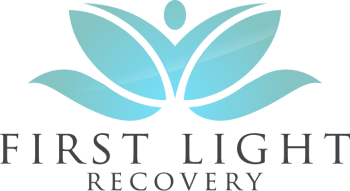Normalizing Difficulties
PTSD is a disorder in which a person has difficulty recovering after experiencing or witnessing traumatic events. The condition may last months or years, with triggers that can bring back memories of the trauma accompanied by intense emotional and physical reactions. Symptoms may include nightmares or unwanted memories of the trauma, avoidance of situations that bring back memories of the trauma, heightened reactions, anxiety, or depressed mood (1). About 3.5% of American Adults suffer from PTSD. That’s about 8 million people over the age of 18 (3).
To hold a diagnosis of PTSD, symptoms include having at least one re-experience, at least one avoidance symptom, two arousal and reactivity symptoms, and at least two cognition and mood symptoms (1)(2).
With avoidance being a symptom of PTSD, it can be difficult to support someone with PTSD. A person experiencing this symptom will avoid feelings related to the traumatic event and avoid thinking about it, making it difficult to support them in getting the help they need. It also may not be as obvious right away what the person is struggling with when symptom onsets a while after the event.
Supporting Your Loved One
There is a lot you can do to support your loved one, though it may at times not feel that way. It’s normal to not know how to support and feel overwhelmed and helpless (4).
- Communicate – It will be hard for your loved one to communicate, so be patient in your attempts and let them share at their own pace and when they are ready. It’s important to share feelings and challenges to strengthen the relationship though refrain from blaming their PTSD for your feelings. Share reciprocally instead of engaging in emotional dumping. Listen without judgment, interrupting, or trying to fix things.
- Plan Activities – Your loved one may find it hard to leave the house. Encourage your loved one to get out and do things but be mindful of what they are comfortable with. Small get-togethers and low stimulating environments in lieu of crowded public places may be easier for them.
- Offer to Accompany Appointments – It may be difficult for them to attend treatment appointments such as doctor’s visits. Memory and disorganization can be symptoms they experience. Offering them support to accompany and take notes if needed could be helpful.
- Crisis Plan Together – Talk about triggers with your loved one. You may not be able to prevent all crisis and triggers but talking about a plan can add helpful steps to de-escalation. This could look like talking to them ahead of time about nightmares, flashbacks, and panic attacks and identifying what would be the most supportive during those instances.
- Frequent Check In’s – Look at what strategies are working, and which are not and focus on what is more helpful for them. Look at new strategies to try out as well or treatment from a clinical professional.
Taking Care of You
When supporting someone with Post Traumatic Stress Disorder, it’s important to take care of you. Take good care of your health by getting plenty of sleep exercise, and good nutrition. Keep doing the things that help you recharge and allow you to look forward to enjoyable activities. Boundaries are important in knowing what you can do and what you are not able to do. It’s ok to take breaks and reach out for your own support group.
Educate Yourself
Look at the different treatments available for your family member or loved one with complex PTSD. The more you know about symptoms, triggers, effects, and treatment options the more equipped and empowered you will feel. There are many evidenced based treatments to alleviate symptoms that include psychotropic medications for a mental health condition. Also look at communication pitfalls for things to avoid. Here are some to consider when providing support to a PTSD sufferer. (5).
- Giving easy answers such as “everything is going to be ok”
- Stopping your loved on from talking about feelings and fears
- Giving unsolicited advice
- Blaming problems on the PTSD
- Invalidating, or minimizing their experience
- Emphasizing weakness when not coping well
- Telling your loved one they are lucky it wasn’t worse
- Make it about you and your experience and feeling
Therapeutic Treatment Options to Consider
Exposure therapy – gradual exposures to triggers in a safe and controlled environment. Imagery, writing, and activities can be used in this intervention
Cognitive Restructuring – This intervention helps make sense of the bad memories and look at the trauma in a realistic way, aside from emphasizing shame and guilt.
EMDR (eye movement desensitization reprocessing) – This intervention involves moving your eyes in a specific way while processing traumatic memories, helping your brain resume a natural healing process.
Cognitive Behavioral Therapy– a type of psychotherapy that emphasizes the critical role of thinking in how we feel and do. CBT aims to recognize, understand, and change negative thinking patterns and behaviors causing an angry outburst, panic attack, or substance abuse.
PTSD Treatment should equip an individual suffering from PTSD with the tools and skills to manage their symptoms and help them access activities they once enjoyed before developing PTSD (2).
Resources:
- https://firstlightrecovery.com/treatments/ptsd-treatment/
- https://www.nimh.nih.gov/health/topics/post-traumatic-stress-disorder-ptsd
- https://www.psychiatry.org/patients-families/ptsd/what-is-ptsd
- https://www.ptsd.va.gov/publications/print/understandingptsd_family_booklet.pdf
- https://www.helpguide.org/articles/ptsd-trauma/helping-someone-with-ptsd.htm




